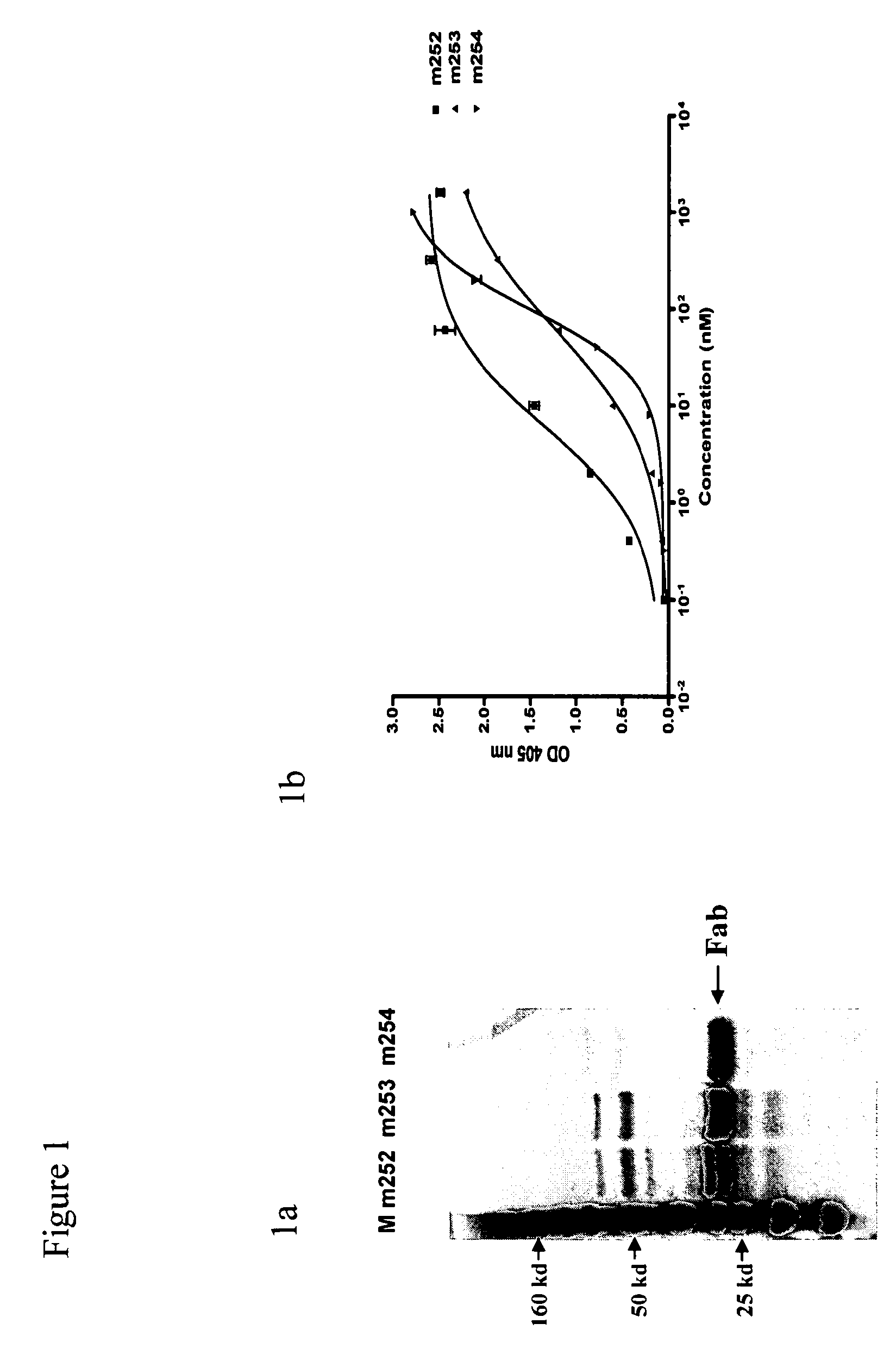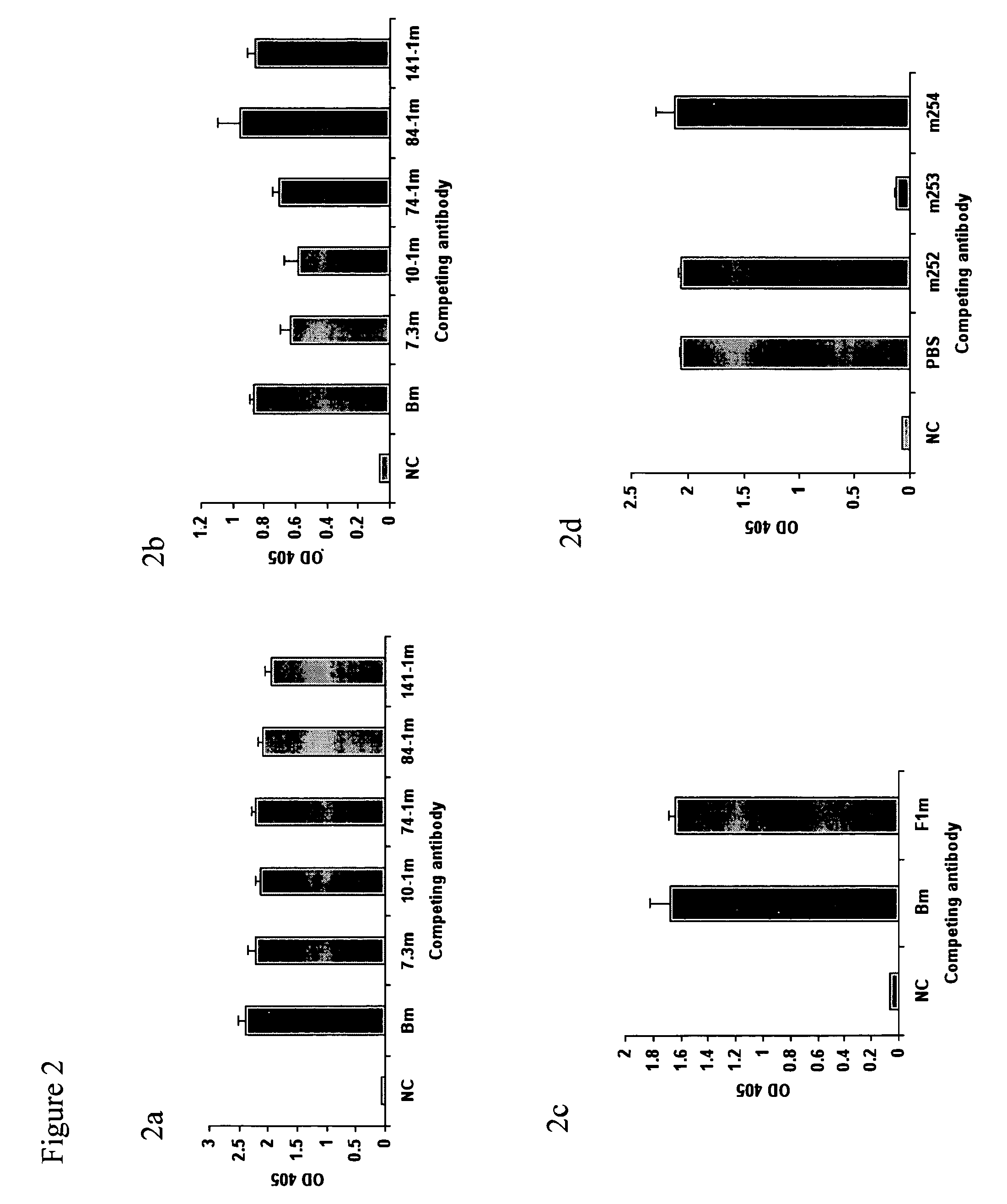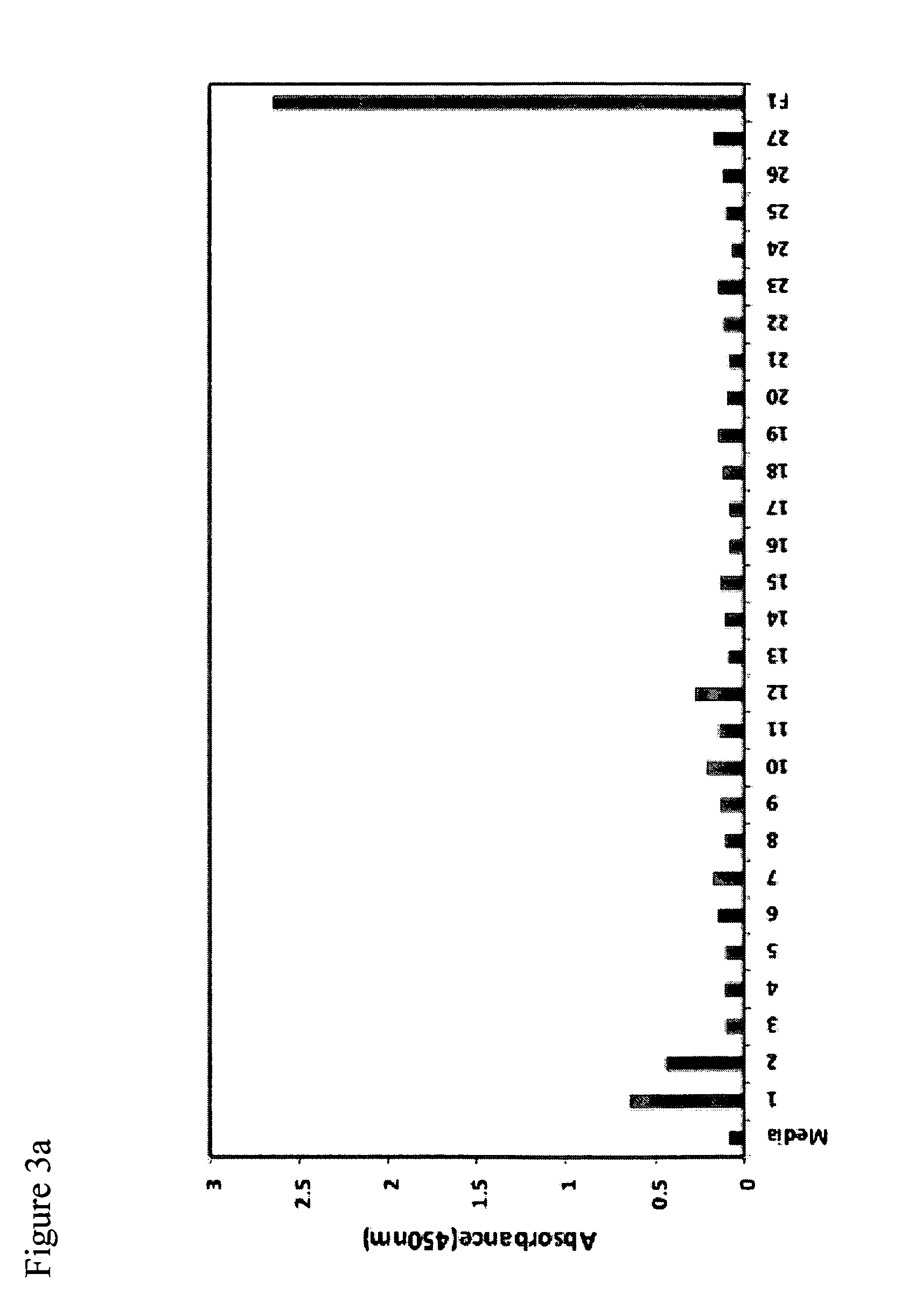Human monoclonal antibodies protective against bubonic plague
a technology bubonic plague, applied in the field of human monoclonal antibodies protective against bubonic plague, can solve the problems of clear synergistic effect, hurdle for the use of mouse mabs, and the adverse effects of live attenuated whole-cell vaccines to varying degrees, so as to increase the challenge of bubonic plagu
- Summary
- Abstract
- Description
- Claims
- Application Information
AI Technical Summary
Benefits of technology
Problems solved by technology
Method used
Image
Examples
example 1
Selection and Purification of Human Anti-F1 and Anti-V Fabs Clones
[0111]With the F1 antigen, only the plate format yielded positive Fab clones. Sequencing of the clones confirmed that they were identical and designated as m252. With the V-antigen, the plate and bead format each yielded two positive Fab clones. One clone from each format, designated as m253 and m254, respectively, was selected for further analysis. Sequence analysis revealed that m252 has heavy and light chains originated from germlines IGHV1-2*02 and IGKV1-16*01 respectively. M253 originated from IGHV1-18*01 and IGKV1-9*01, while m254 was from IGHV3-43*01 and IGKV1-27*01. The mutational rate ranged from zero to less than 10%. This is typical for antibodies isolated from naive human libraries by panning against viruses causing acute infection in contrast to neutralizing antibodies selected from immune human libraries by panning against HIV-1 which causes chronic infection (Xiao, X. et al., 2009, Biochem. Biophys. Res...
example 2
Binding of the Selected mAbs as Fabs and IgG1s to Their Antigens
[0112]To determine both the specificity and affinity of the selected antibodies, ELISA with both Fab and IgG formats were conducted as described in the methods. All Fabs and IgGs bound to their respective antigens specifically without cross-reaction to other antigens tested (FIGS. 1b and d). Anti-F1 Fab and IgG have apparent affinities in the low and sub-nM range, respectively. Both m253 and m254 Fabs have apparent affinities of approximately 100 nM (FIGS. 1b and d). Their IgGs however have sub-nM apparent affinities (avidities). The avidity effect is very pronounced for all three antibodies.
example 3
Low Level of Competition Between the Human Anti-F1 and Anti-V Fabs and Mouse Anti-F1 and Anti-V Mabs
[0113]The three human anti-plague Fabs were used in competition-ELISAs against a panel of mouse anti-plague mAbs. The mouse anti-plague mAbs included the anti-F1 mAb F1-04-A-G1, and five anti-V mAbs, which included the anti-V mAb 7.3 that was highly protective (see FIGS. 4-7 below). We found no apparent competition between the human anti-V m253 Fab and the mouse anti-V mAbs (FIG. 2a). However, we observed some weak competition between the human anti-V m254 Fab antibody and some of the mouse anti-V mAbs (7.3m, 10-1m, and 74-1m) that we did not see with the human anti-V m253 Fab antibody (FIG. 2b). The competition between the human anti-F1 m252 Fab antibody and the mouse anti-F1 mAb was also minimal (FIG. 2c). There was also a lack of competition between the human anti-V m253 and m254 Fab antibodies, suggesting that these two human anti-V Fabs recognize different epitopes on the V-antig...
PUM
| Property | Measurement | Unit |
|---|---|---|
| body weight | aaaaa | aaaaa |
| body weight | aaaaa | aaaaa |
| body weight | aaaaa | aaaaa |
Abstract
Description
Claims
Application Information
 Login to View More
Login to View More - R&D
- Intellectual Property
- Life Sciences
- Materials
- Tech Scout
- Unparalleled Data Quality
- Higher Quality Content
- 60% Fewer Hallucinations
Browse by: Latest US Patents, China's latest patents, Technical Efficacy Thesaurus, Application Domain, Technology Topic, Popular Technical Reports.
© 2025 PatSnap. All rights reserved.Legal|Privacy policy|Modern Slavery Act Transparency Statement|Sitemap|About US| Contact US: help@patsnap.com



